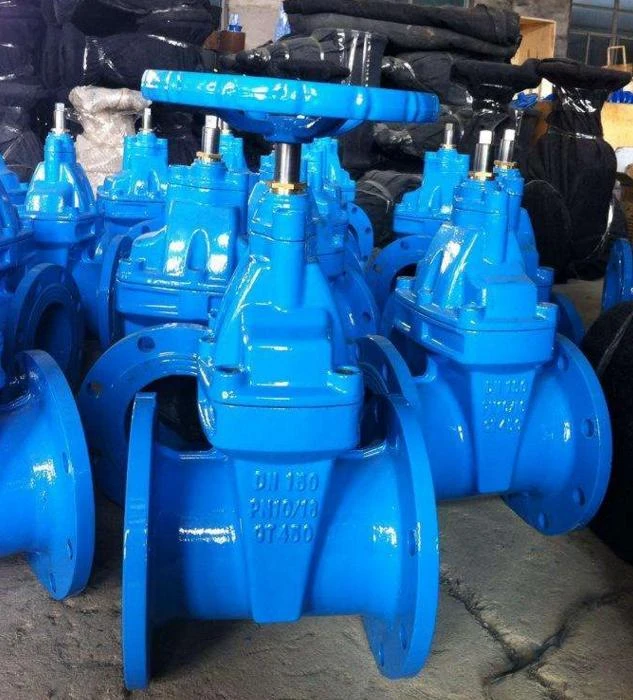វិច្ឆិកា . 12, 2024 11:07 Back to list
water main check valve
Understanding Water Main Check Valves An Essential Component for Efficient Water Management
In modern water distribution systems, maintaining the quality and reliability of potable water is of utmost importance. One of the essential components that plays a pivotal role in ensuring efficient water management is the water main check valve. This device not only protects the integrity of the water supply but also enhances the overall functionality of the pipeline network.
What is a Water Main Check Valve?
A water main check valve is a mechanical device installed in water distribution systems to allow water to flow in only one direction. Its primary purpose is to prevent backflow, which can occur when there is a reduction in water pressure or a sudden change in flow direction. By allowing water to move in the intended direction while blocking reverse flow, check valves help to maintain the quality of the water supplied to consumers and protect the pipes from potential damage.
Importance of Check Valves in Water Distribution
1. Prevention of Backflow One of the primary functions of a check valve is to prevent backflow. Backflow can lead to contamination of the water supply, exposing consumers to harmful pollutants and bacteria. This contamination can occur when there is a drop in pressure, typically caused by a sudden demand for water or a break in the main line. With check valves in place, these risks are significantly minimized.
2. Protection of Pumps and Equipment In water treatment and distribution systems, pumps are often used to move water through the pipelines. If backflow occurs, it can cause damage to pumps and other equipment, resulting in costly repairs and downtime. Check valves protect these crucial components by ensuring that water flows only in the intended direction, thereby prolonging the life of the system.
3. Energy Efficiency Water distribution systems require energy for pumping and treatment. By preventing backflow, check valves ensure that energy is not wasted. When water flows correctly through the system, less energy is required to maintain pressure and flow, which translates to lower operational costs for water utilities.
4. Regulatory Compliance Many municipalities have stringent regulations regarding the potable water supply. Check valves help water utilities comply with these regulations by ensuring that water is not contaminated and that the systems operate within established safety parameters.
water main check valve

Types of Check Valves
There are several types of check valves commonly used in water main systems, each designed for specific applications
1. Swing Check Valves These feature a disc that swings on a hinge to allow forward flow. They are ideal for applications with high flow rates and less frequency of flow reversal.
2. Lift Check Valves In lift check valves, the disc is lifted off its seat by the flow of water, allowing passage. When the flow stops, gravity returns the disc to its seat, preventing backflow.
3. Ball Check Valves These valves use a ball that sits atop an orifice, allowing flow only in one direction. They are often utilized in smaller pipelines due to their compact design.
4. Diaphragm Check Valves These contain a diaphragm that flexes with flow changes. They are effective in applications where prevention of suction is critical.
Installation and Maintenance
Proper installation and regular maintenance of water main check valves are crucial for their optimal performance. Valves should be installed at appropriate locations in the water distribution network, often at the junctions of mains and laterals. Regular inspections are necessary to detect signs of wear, corrosion, or blockages that could impede functionality.
In summary, water main check valves are indispensable in ensuring the reliability and safety of water supply systems. By preventing backflow, protecting equipment, enhancing energy efficiency, and ensuring regulatory compliance, these devices play a critical role in modern water management. As communities continue to grow and the demand for reliable water supplies increases, the importance of check valves in maintaining high-quality water distribution cannot be overstated. Investing in these systems ensures a sustainable and safe water supply for future generations.
-
Threaded Ring Gauge Measurement UncertaintyNewsJul.14,2025
-
Spirit Level Ruler Calibration CheckNewsJul.14,2025
-
Magnetic V Block Material GradesNewsJul.14,2025
-
Indicating Micrometer Digital DisplaysNewsJul.14,2025
-
How Accurate is a Typical Ruler with Right AngleNewsJul.14,2025
-
Go No Go Pin Gauge Temperature EffectsNewsJul.14,2025
Related PRODUCTS









